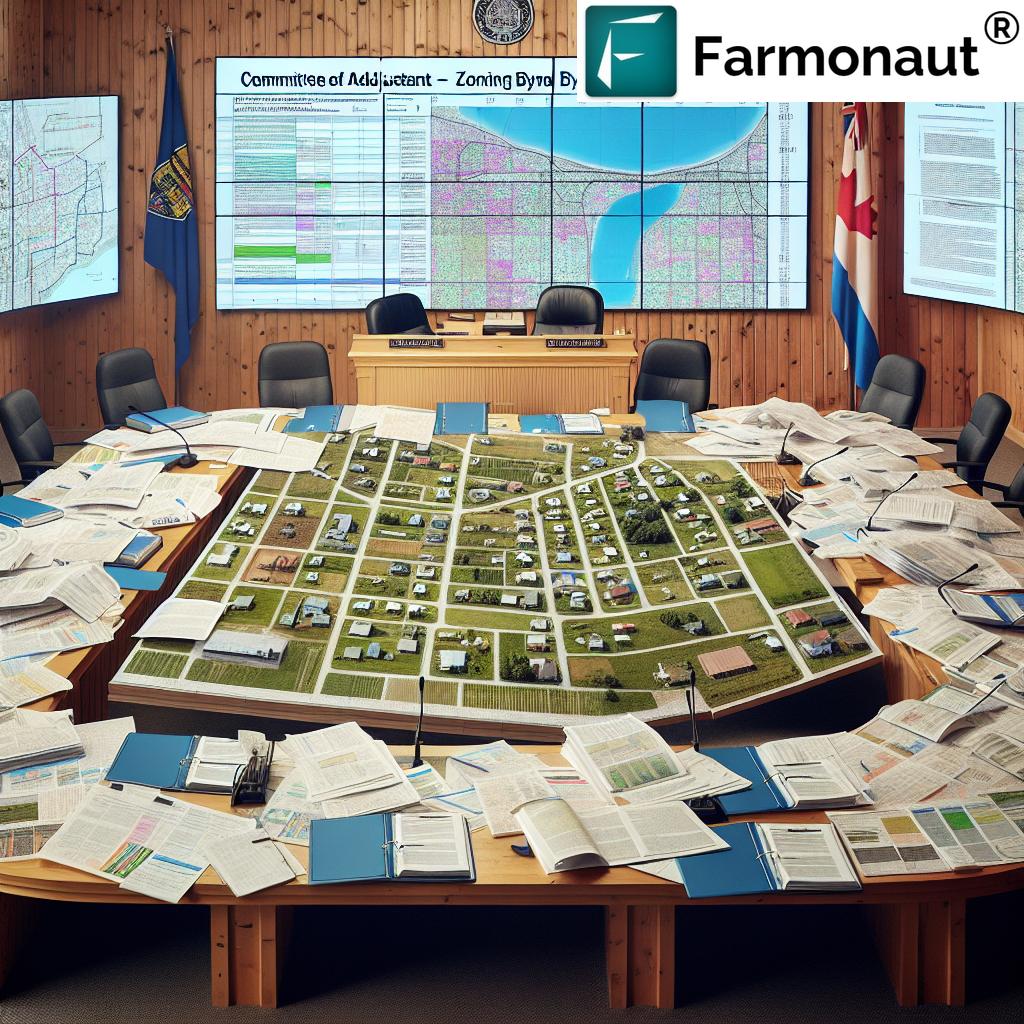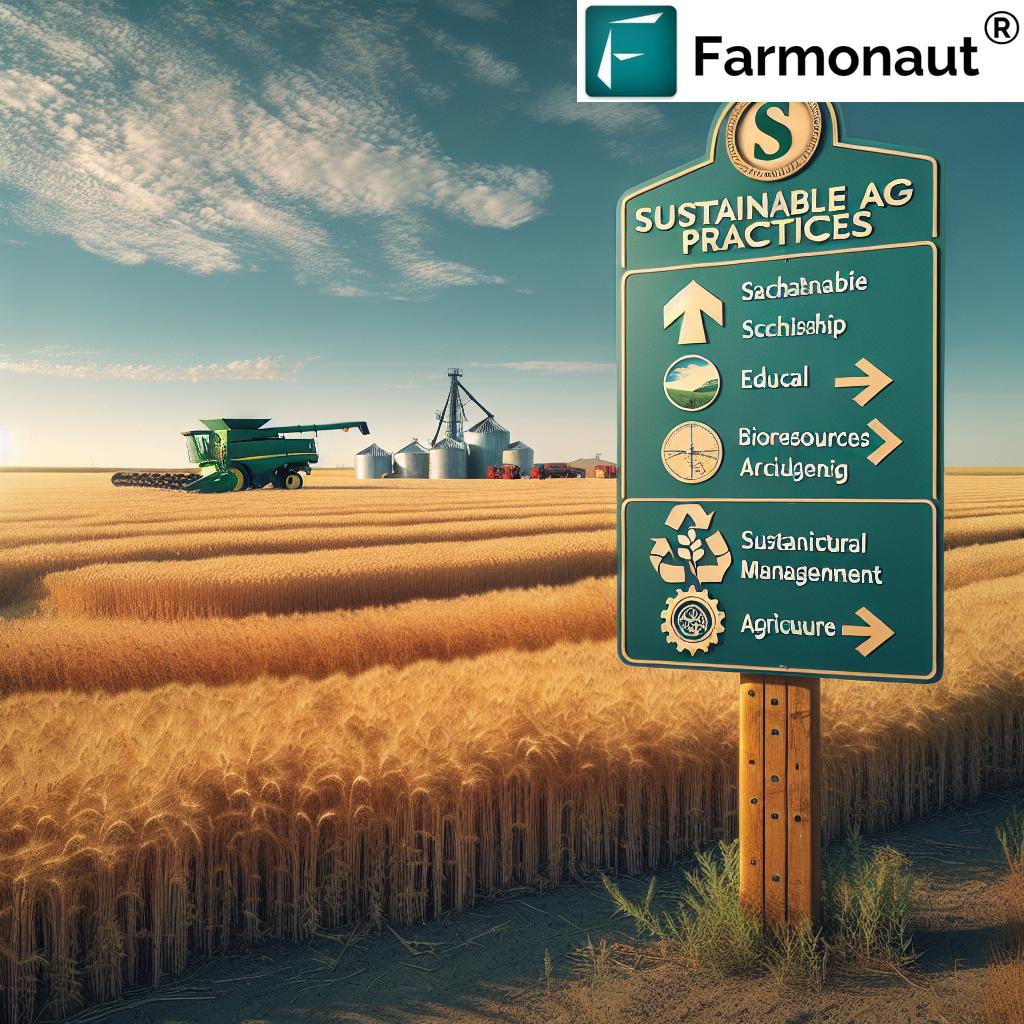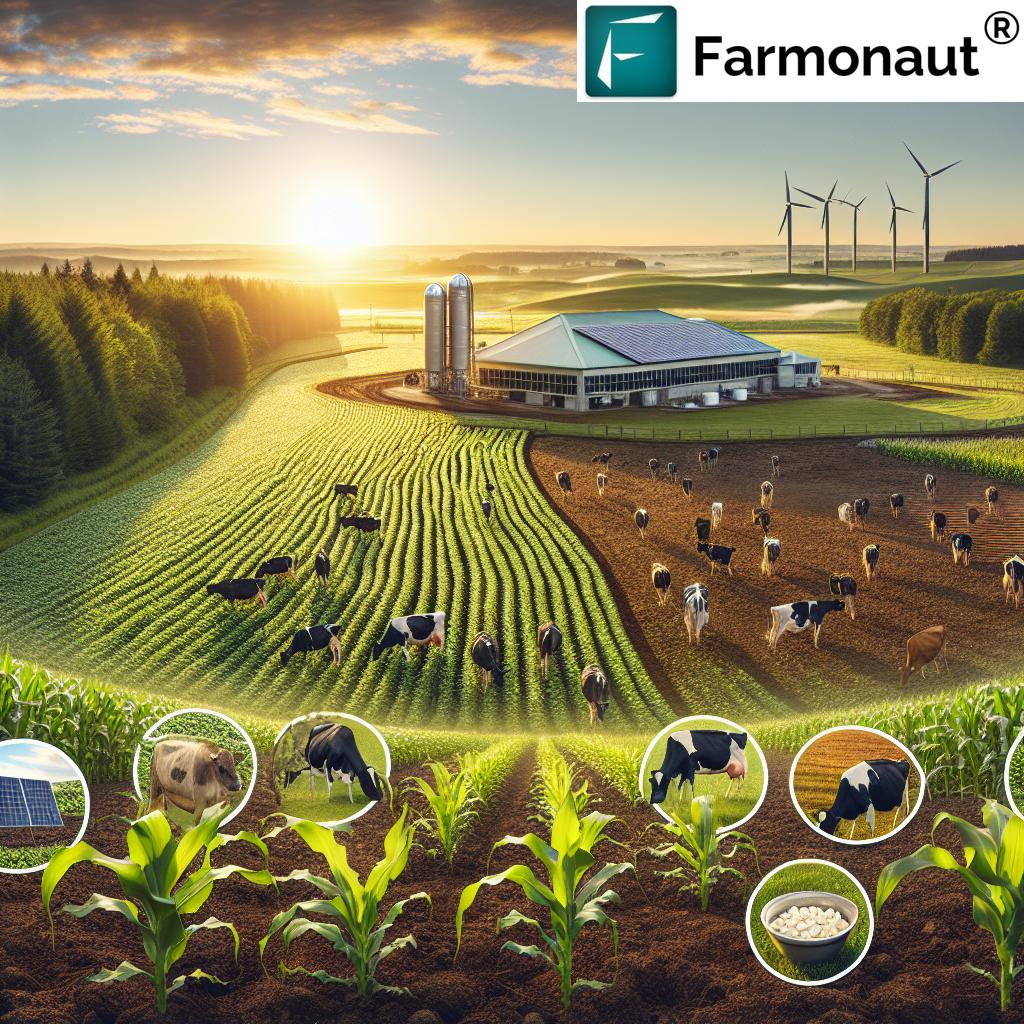Unlocking the Potential of Wild Edible Plants: A Sustainable Guide to Foraging and Farming in Quebec
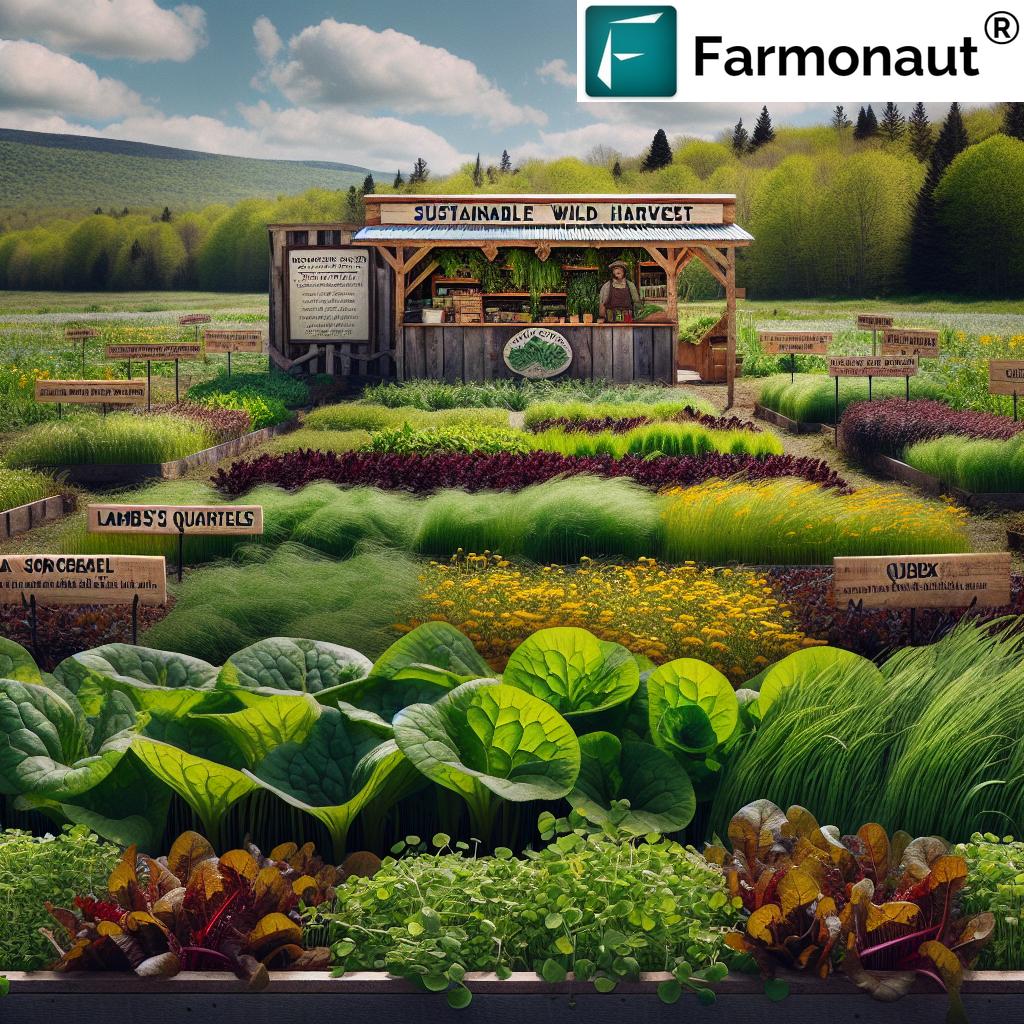
“Quebec’s wild edible plants can provide up to 30% more nutrients than cultivated crops, offering a sustainable farming alternative.”
Welcome to our comprehensive guide on unlocking the potential of wild edible plants in Quebec! As we delve into the world of sustainable agriculture and foraging, we’ll explore how these often-overlooked natural resources can revolutionize farming practices and create unique business opportunities. At Farmonaut, we’re passionate about integrating innovative technology with traditional farming methods to promote sustainability and efficiency in agriculture.
In this blog post, we’ll take you on a journey through the lush landscapes of Quebec, uncovering the hidden treasures of wild edible plants that thrive in this region. We’ll discuss how foraging for edible weeds can complement cultivated crops, offering a sustainable and profitable alternative to conventional farming methods. From nutrient-rich wild greens to farm-to-table cuisine, we’ll explore the growing recognition of these plants in the culinary world and their potential to transform your perception of weeds from adversaries to valuable allies in organic food production.
The Rise of Wild Edible Plants in Sustainable Agriculture
As we face increasing challenges in global food production and environmental sustainability, the importance of diversifying our agricultural practices has never been more apparent. Wild edible plants offer a unique solution to these challenges, providing a natural, low-input source of nutrition that can thrive alongside traditional crops.
- Biodiversity enhancement
- Soil health improvement
- Reduced dependence on chemical inputs
- Climate resilience
By incorporating wild edible plants into farming systems, we can create more resilient and sustainable agricultural ecosystems. These plants often require less water, fertilizer, and pest control measures compared to conventional crops, making them an environmentally friendly option for farmers looking to reduce their ecological footprint.
Foraging for Edible Weeds: A Complementary Approach to Cultivated Crops
Foraging for edible weeds is not just a survival skill; it’s a sustainable practice that can significantly enhance farm productivity and profitability. Many plants that are often considered weeds are, in fact, nutritious and delicious edibles that can be harvested with minimal effort.
Benefits of incorporating foraged plants into your farm:
- Diversified income streams
- Extended harvest seasons
- Increased land utilization
- Enhanced soil health through natural plant interactions
By learning to identify and harvest these wild plants, farmers can tap into a valuable resource that grows naturally on their property, requiring little to no additional input or cultivation.
Nutrient-Rich Wild Greens: Nature’s Early Season Bounty
One of the most exciting aspects of wild edible plants is their nutritional profile. Many wild greens are packed with vitamins, minerals, and antioxidants, often surpassing their cultivated counterparts in nutrient density.
Popular nutrient-rich wild greens in Quebec:
- Dandelion leaves (Taraxacum officinale)
- Lamb’s quarters (Chenopodium album)
- Sorrel (Rumex spp.)
- Fiddleheads (Matteuccia struthiopteris)
These plants often emerge early in the season, providing a valuable source of fresh greens when other crops are still in their infancy. This early harvest can help bridge the gap between winter stores and summer abundance, offering farmers a unique product to bring to market.
From Farm to Table: The Growing Recognition of Wild Edibles in Cuisine
As the farm-to-table movement continues to gain momentum, chefs and food enthusiasts are increasingly turning to wild edible plants to add unique flavors and textures to their dishes. This growing demand presents an exciting opportunity for farmers to diversify their offerings and tap into new markets.
Popular wild edibles in Quebec cuisine:
- Wild leeks (Allium tricoccum)
- Spruce tips (Picea spp.)
- Wild strawberries (Fragaria virginiana)
- Chickweed (Stellaria media)
By cultivating relationships with local chefs and restaurants, farmers can create a steady demand for their foraged products, turning what was once considered a nuisance into a profitable crop.
Starting a Wild Foods Business: Essential Considerations
Embarking on a wild foods business venture requires careful planning and consideration. Here are some key aspects to keep in mind:
- Plant Identification: Accurate identification is crucial for safety and quality. Invest time in learning to recognize edible plants and their look-alikes.
- Harvesting Techniques: Develop sustainable harvesting practices to ensure the long-term viability of wild plant populations.
- Processing and Storage: Implement proper cleaning, processing, and storage methods to maintain product quality and shelf life.
- Marketing and Presentation: Create appealing packaging and labeling that highlights the unique qualities of your wild-harvested products.
- Regulatory Compliance: Familiarize yourself with local regulations regarding the sale of foraged foods and obtain any necessary permits or certifications.
By addressing these aspects, you can lay a strong foundation for a successful wild foods business that complements your existing farming operations.
Leveraging Technology in Wild Edible Plant Farming
At Farmonaut, we believe in the power of technology to enhance farming practices, including the cultivation and management of wild edible plants. Our satellite-based farm management solutions can be invaluable tools for farmers venturing into this exciting field.
How Farmonaut’s technology can support wild edible plant farming:
- Mapping potential foraging areas on your property
- Monitoring soil moisture levels to optimize wild plant growth
- Tracking plant health using vegetation indices
- Providing weather forecasts to plan harvesting activities
By integrating these technological solutions with traditional knowledge and sustainable practices, farmers can maximize the potential of their wild edible plant ventures.
Sustainable Harvesting Techniques for Wild Edible Plants
Sustainable harvesting is crucial for maintaining healthy wild plant populations and ensuring a long-term supply of these valuable resources. Here are some key principles to follow:
- Only harvest plants that are abundant in the area
- Avoid harvesting more than 1/3 of a plant population
- Use proper tools and techniques to minimize damage to plants
- Rotate harvesting areas to allow for regeneration
- Be mindful of the plant’s life cycle and harvest at appropriate times
By adopting these sustainable practices, we can ensure that wild edible plants remain a viable resource for generations to come.
Building Relationships with Local Chefs and Restaurants
Developing strong relationships with local culinary professionals is key to creating a thriving wild foods business. Here are some strategies to consider:
- Organize tasting events to showcase your wild edible products
- Offer educational workshops on foraging and using wild ingredients
- Collaborate with chefs to develop unique wild food-based dishes
- Provide consistent quality and reliable supply of wild edibles
- Stay informed about culinary trends and adapt your offerings accordingly
By positioning yourself as a knowledgeable and reliable source of wild edible plants, you can become an invaluable partner to local chefs and restaurants.
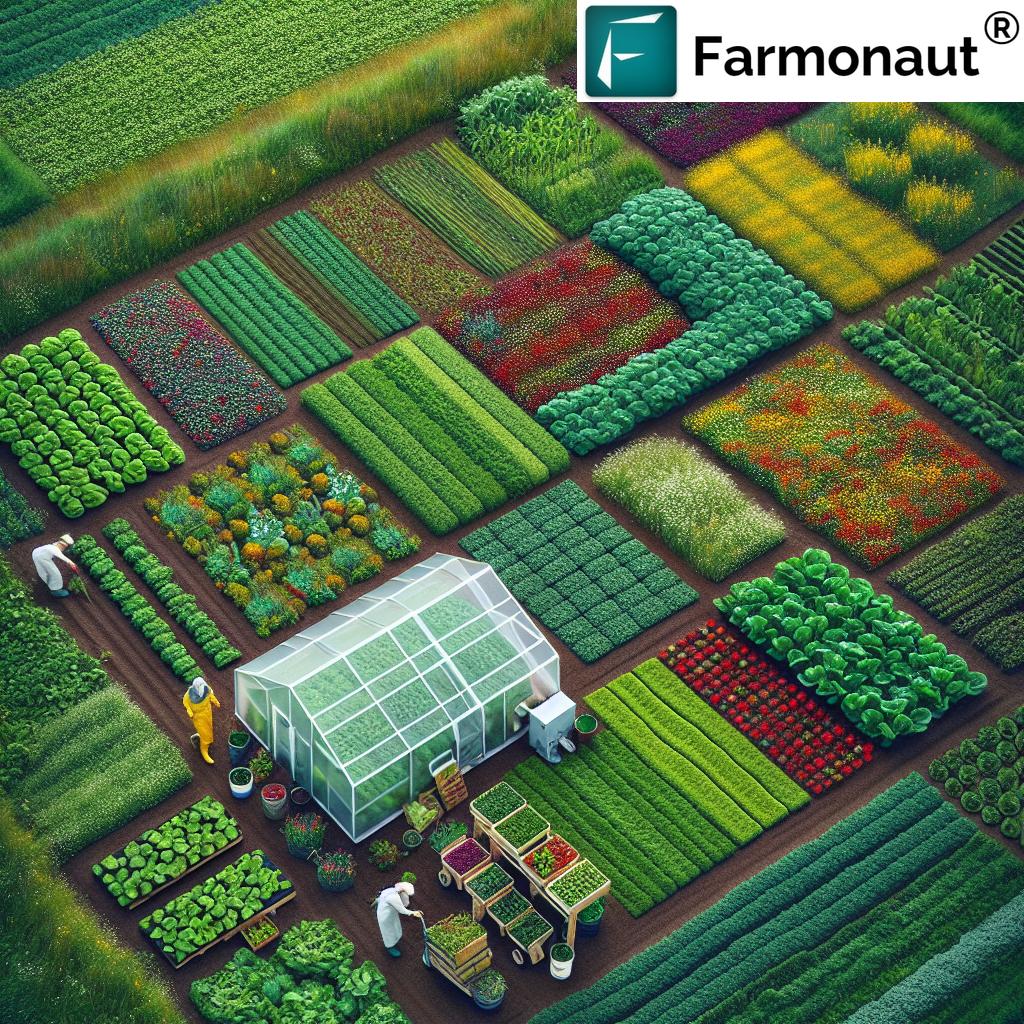
The Importance of Biodiversity in Sustainable Farming
Incorporating wild edible plants into your farming practices not only provides additional income streams but also contributes to increased biodiversity on your farm. This enhanced biodiversity offers numerous benefits:
- Improved pollinator habitat
- Natural pest control
- Enhanced soil health
- Increased resilience to climate change
By embracing the diversity of wild edible plants, we can create more robust and sustainable agricultural ecosystems that benefit both farmers and the environment.
“Foraging for wild greens can increase farm revenue by 15-20% when integrated with traditional crop production methods.”
Diversifying Crop Production with Wild Edible Plants
Integrating wild edible plants into your existing crop production can help diversify your farm’s output and reduce reliance on a single crop. This diversification strategy offers several advantages:
- Reduced risk from crop failures or market fluctuations
- Extended growing and harvesting seasons
- Attraction of a wider customer base
- Improved land utilization
By thoughtfully incorporating wild edible plants into your crop rotation and farm layout, you can create a more resilient and profitable farming operation.
Creating Value-Added Products from Wild Edible Plants
To maximize the potential of your wild edible plant harvest, consider developing value-added products. These can help extend the shelf life of your harvest and create additional revenue streams. Some ideas include:
- Dried herb blends
- Wild plant pestos and sauces
- Preserves and jellies
- Infused oils and vinegars
- Wild plant teas
By transforming raw ingredients into unique products, you can tap into niche markets and command higher prices for your wild edible plant harvests.
Educating Consumers about Wild Edible Plants
As you venture into the world of wild edible plants, it’s important to educate your customers about these unique products. Consider the following strategies:
- Provide recipe cards or cooking suggestions with your products
- Offer workshops or farm tours focused on wild edible plants
- Create informative social media content about the benefits and uses of wild edibles
- Collaborate with local nutritionists or health professionals to highlight the nutritional value of wild plants
By empowering consumers with knowledge about wild edible plants, you can create a loyal customer base and contribute to a broader appreciation for these often-overlooked natural resources.
Explore Farmonaut’s API for advanced satellite-based farm management
Seasonal Considerations for Wild Edible Plant Harvesting
Understanding the seasonal availability of wild edible plants is crucial for successful foraging and integration into your farming practices. Here’s a general guide to the seasons of wild edibles in Quebec:
- Spring: Fiddleheads, dandelion greens, wild leeks, spruce tips
- Summer: Lamb’s quarters, purslane, wild berries, chickweed
- Fall: Wild mushrooms, rosehips, hawthorn berries
- Winter: Pine needles, birch bark (for tea), wintergreen berries
By aligning your harvesting activities with these natural cycles, you can ensure a steady supply of wild edibles throughout the year.
Equipment and Tools for Wild Edible Plant Harvesting
Having the right equipment can make your wild edible plant harvesting more efficient and sustainable. Consider investing in the following tools:
- Foraging baskets or bags
- Pruning shears
- Gloves
- Field guides and plant identification apps
- GPS device for mapping foraging locations
Remember to clean and maintain your tools regularly to prevent the spread of plant diseases and ensure the quality of your harvest.
Access Farmonaut’s API Developer Docs for seamless integration
Legal and Ethical Considerations in Wild Edible Plant Foraging
As you explore the world of wild edible plants, it’s crucial to be aware of the legal and ethical considerations surrounding foraging. Keep the following points in mind:
- Obtain necessary permits for foraging on public lands
- Respect private property and obtain permission before foraging
- Follow local regulations regarding the sale of foraged foods
- Avoid harvesting endangered or protected species
- Practice responsible foraging to maintain plant populations
By adhering to these guidelines, you can ensure that your wild edible plant business operates ethically and sustainably.
Marketing Strategies for Wild Edible Plant Products
Effective marketing is key to the success of your wild edible plant business. Consider implementing the following strategies:
- Develop a strong brand identity that emphasizes sustainability and local sourcing
- Utilize social media to showcase your products and share educational content
- Participate in farmers’ markets and local food events
- Collaborate with local food bloggers and influencers
- Offer CSA (Community Supported Agriculture) programs focused on wild edibles
By highlighting the unique qualities and benefits of your wild edible plant products, you can attract customers who value sustainable, locally-sourced foods.
Integrating Wild Edible Plants with Organic Farming Practices
Wild edible plants naturally align with organic farming principles, making them an excellent addition to organic farming operations. Here’s how you can integrate wild edibles into your organic farm:
- Use wild plants as companion crops to support cultivated species
- Incorporate wild edibles into your crop rotation to improve soil health
- Utilize wild plants for natural pest control and pollinator attraction
- Create wild plant buffer zones around cultivated areas
By embracing the synergy between wild edible plants and organic farming practices, you can create a more resilient and productive agricultural ecosystem.
The Role of Technology in Wild Edible Plant Management
At Farmonaut, we recognize the importance of technology in modern agriculture, including the management of wild edible plants. Our satellite-based farm management solutions can be particularly beneficial for farmers integrating wild edibles into their operations:
- Use satellite imagery to identify potential foraging areas on your property
- Monitor vegetation health indices to track the growth of wild plant populations
- Utilize weather forecasting tools to plan harvesting activities
- Implement precision agriculture techniques to optimize wild plant growth
By leveraging these technological tools, farmers can make more informed decisions about their wild edible plant harvests and management strategies.
Challenges and Solutions in Wild Edible Plant Farming
While integrating wild edible plants into your farming practices offers numerous benefits, it also comes with its own set of challenges. Here are some common issues and potential solutions:
- Challenge: Inconsistent supply of wild edibles
Solution: Develop a diverse portfolio of wild plants and supplement with semi-wild cultivation - Challenge: Consumer unfamiliarity with wild edibles
Solution: Provide education and recipe ideas to help customers appreciate these unique products - Challenge: Competition with other foragers
Solution: Establish relationships with landowners and diversify your foraging locations - Challenge: Quality control and food safety concerns
Solution: Implement rigorous testing and processing protocols, and obtain necessary certifications
By anticipating these challenges and implementing proactive solutions, you can build a more resilient and successful wild edible plant business.
The Future of Wild Edible Plants in Sustainable Agriculture
As we look to the future of sustainable agriculture, wild edible plants are poised to play an increasingly important role. Their ability to thrive with minimal inputs, contribute to biodiversity, and offer unique nutritional profiles makes them valuable assets in creating resilient food systems.
At Farmonaut, we’re committed to supporting farmers in their journey towards more sustainable and diversified agricultural practices. Our technology solutions can help you optimize your wild edible plant operations, from identifying potential foraging areas to monitoring plant health and planning harvests.
Popular Wild Edible Plants in Quebec: Nutrition and Culinary Uses
| Plant Name | Nutritional Highlights | Culinary Uses | Harvesting Season | Estimated Market Value |
|---|---|---|---|---|
| Dandelion Leaves | High in Vitamins A, C, K; Iron, Calcium | Salads, Sautéed Greens, Teas | Spring to Fall | $8-$12 per pound |
| Lamb’s Quarters | Rich in Vitamins A, C; Calcium, Iron | Salads, Cooked Greens, Pesto | Late Spring to Fall | $10-$15 per pound |
| Fiddleheads | High in Omega-3, Fiber, Antioxidants | Sautéed, Steamed, Pickled | Early Spring | $12-$20 per pound |
| Wild Leeks (Ramps) | Vitamins A, C; Selenium, Chromium | Pesto, Soups, Sautéed | Early Spring | $15-$25 per pound |
Conclusion
Unlocking the potential of wild edible plants offers an exciting opportunity for farmers in Quebec to diversify their operations, enhance sustainability, and tap into growing market demand for unique, locally-sourced foods. By combining traditional knowledge with modern technology and sustainable practices, we can create a thriving wild foods industry that benefits both farmers and consumers.
At Farmonaut, we’re dedicated to supporting this transition towards more diverse and sustainable agricultural practices. Our satellite-based farm management solutions can help you optimize your wild edible plant operations, from identifying potential foraging areas to monitoring plant health and planning harvests.
As you embark on your journey into the world of wild edible plants, remember that patience, continuous learning, and a commitment to sustainability are key to success. By respecting the natural cycles of these plants and adopting responsible harvesting practices, we can ensure that these valuable resources remain available for generations to come.
We invite you to explore the possibilities that wild edible plants offer for your farming operation. Whether you’re looking to supplement your existing crops or create an entirely new business venture, the world of wild edibles is ripe with opportunity. Let’s work together to unlock the full potential of Quebec’s natural bounty and create a more sustainable, diverse, and delicious future for agriculture in our region.
FAQs
- Q: Is it legal to sell wild edible plants in Quebec?
A: Yes, it is legal to sell wild edible plants in Quebec, but you must comply with local regulations and obtain necessary permits. It’s important to ensure that you’re not harvesting protected species and that you have permission to forage on the land. - Q: How can I ensure the safety of wild edible plants for consumption?
A: Proper identification is crucial. Use reliable field guides, consult with experts, and consider taking foraging courses. Always clean and process wild edibles properly, and be aware of any potential contamination sources in the foraging area. - Q: Can I integrate wild edible plants into my existing farm operations?
A: Absolutely! Wild edible plants can complement traditional crops and provide additional income streams. They can be integrated into crop rotations, used as companion plants, or harvested from uncultivated areas of your property. - Q: What are some of the most profitable wild edible plants in Quebec?
A: Some of the most profitable wild edibles in Quebec include fiddleheads, wild leeks (ramps), morel mushrooms, and wild berries. However, profitability can vary based on local demand and seasonal availability. - Q: How can Farmonaut’s technology help me in managing wild edible plants?
A: Farmonaut’s satellite-based farm management solutions can help you identify potential foraging areas, monitor vegetation health, track weather patterns, and optimize harvesting schedules. This technology can significantly improve the efficiency and sustainability of your wild edible plant operations.





